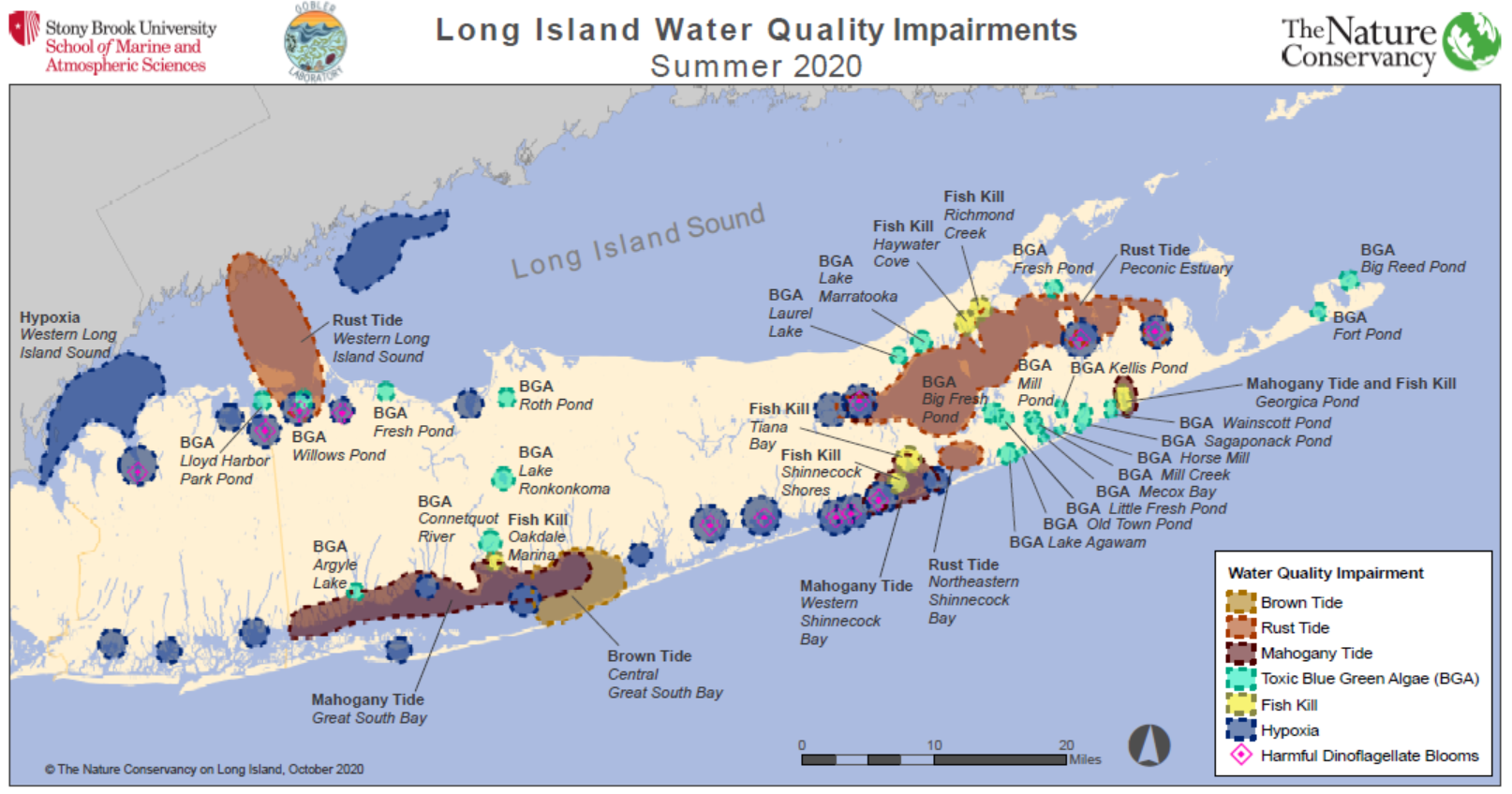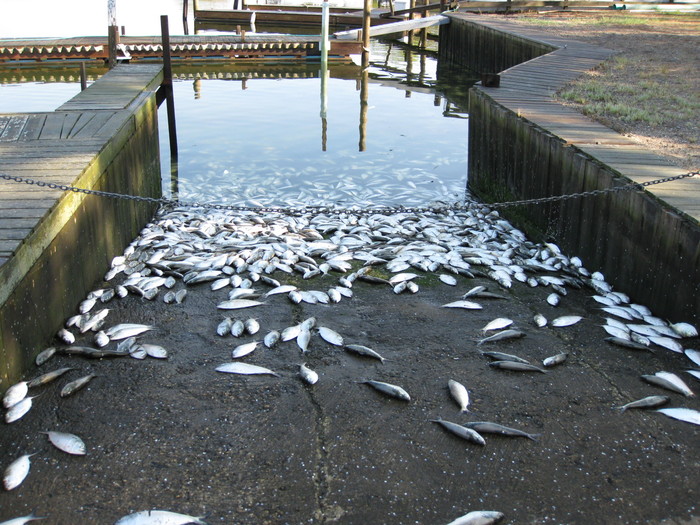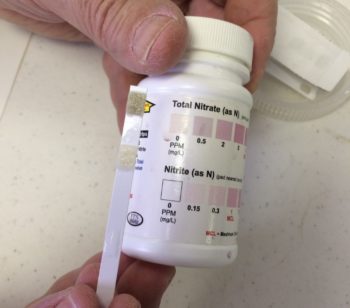Protecting & Restoring Long Island's Peconic Bays
Nitrogen pollution has been identified as one of the greatest threats to the Peconic Estuary due to its far reaching impacts, including harmful algal blooms, hypoxia, fish kills, and high treatment cost for drinking water.
Nitrogen is a commonly occurring element that is present in air, water, and soil. Nitrogen is an essential nutrient for healthy ecosystems, supporting growth of algae and aquatic plants, which provide food and habitat for fish, shellfish and invertebrates. However, excess nitrogen from human activities can cause detrimental impacts such as coastal acidification, harmful algal blooms (HABs), low levels of dissolved oxygen in the water, and loss of critical eelgrass and wetland habitats. Over the past two decades, nitrogen pollution has become recognized as one of the greatest threats to the Peconic Estuary due to its far reaching impacts.
Excess nitrogen from human activities can cause detrimental impacts such as coastal acidification, harmful algal blooms (HABs), low levels of dissolved oxygen in the water, and loss of critical eelgrass and wetland habitats.

The western part of the Estuary is particularly susceptible to the negative impacts of nitrogen pollution due to the presence of multiple pollution sources and low levels of tidal flushing. Toward the eastern end of the Estuary, deepter waters and greater tidal flushing lessen the potential for severe impacts from nitrogen pollution.
Subwatershed nitrogen yield in kilograms nitrogen load per unit hectare of subwatershed area. The darker the color of the subwatershed, the larger the contribution of the total nitrogen loading to the estuary. Based on figure from Nitrogen load modeling to forty-three subwatersheds of the Peconic Estuary- Stephen Lloyd, 2014.
On a global scale, additional amounts of nitrogen activated by human activity are now so large that it significantly perturbs the global nitrogen cycle. Human activities convert around 120 million metric tons of nitrogen from the atmosphere per year into reactive nitrogen forms, more than the combined effects from all Earth’s terrestrial processes. Much of this new reactive nitrogen ends up in the environment, polluting waterways and the coastal zone. Anthropogenic distortion of the nitrogen cycle has shifted marine ecosystems to experience periods of zero oxygen, called anoxia, and prevalent algal blooms caused by excessive nutrients. In the northern hemisphere, excess nitrogen inputs have led to reduction in biodiversity; accelerated climate change through the production of nitrous oxide gas; widespread air and water pollution including eutrophication; and hypoxic “dead zones” in the coastal ocean.
Too much nitrogen is one of the primary causes of the excessive algae growth we see in our local bays. When excessive levels of nitrogen are introduced to the estuary, from sources such as fertilizer and human and animal waste, nuisance algae and “seaweed” blooms are likely to result. An algal bloom consists of any proliferation or rapid increase in one or several species of microalgae (phytoplankton), cyanobacteria (blue-green algae) or macroalgae (seaweed). A bloom is typically considered “harmful” if it creates any health impact to other living organisms or otherwise degrades or impairs a valued quality of the surface waters or habitat within the estuary.
The negative impacts of algal blooms are broad. Some algal blooms produce toxins that cause severe illness or death in humans, wildlife, or fish. Others do not pose a direct threat to human or animal health, but cause aesthetic impacts and reduced recreational values resulting from discolored water, foul odors and changes in water quality such as hypoxia (low oxygen conditions). Additionally, algal blooms and high amounts of particles in the water can cloud the water, blocking sunlight from reaching underwater plant life, like eelgrass.

Harmful algal blooms have plagued the Peconic Estuary for many years. In June 1985, an unusually large and persistent algal bloom caused by the marine algae Aureococcus anophagefferens, now known as Brown Tide, was first noted in the Peconic Estuary. As the name suggests, this marine algae turns the water brown and can have a serious impact on natural resources, the local economy and the general aesthetic value of the estuary. While not harmful to humans, the presence of Brown Tide is a problem for scallops and eelgrass because the bloom blocks out sunlight needed for eelgrass to survive and eelgrass provides vital spawning and nursery habitat for shellfish and finfish.
The occurrence of Brown Tide in the 1980’s was a main impetus for the creation of the Peconic Estuary Partnership.
The Brown Tide blooms persisted in high concentrations for extended periods in all or part of the Peconic Estuary from 1985 through 1988, 1990 through 1992, and 1995 and as a result eelgrass and the bay scallop population declined significantly in the Peconic Estuary. The occurrence of Brown Tide in the 1980’s was a main impetus for the creation of the Peconic Estuary Partnership. Although Brown Tides are no longer dominant, the Peconic Estuary experiences numerous other harmful algae blooms annually.
Red tide blooms, caused by Alexandrium fundyense, have been identified in James Creek, Sag Harbor Cove. Red tide blooms caused by Dinophysis acuminata have been recorded in Meetinghouse Creek and western Flanders Bay. Rust tide blooms caused by Cochlodinium polykrikoides have been recorded in Flanders Bay and parts of Great Peconic Bay and have been implicated in fish and shellfish kills in the western Peconic Estuary. Toxic blue-green algae blooms caused by Cyanobacteria sp. have been limited to a few tributaries of a few embayments within the Estuary. While Ulva lactuca blooms are present in the Peconic Estuary, significant impacts have not yet been documented.
Check the NYSDEC Harmful Algal Bloom Archive for recent HABs in the area.

Dissolved oxygen (DO) is necessary for fish and other aquatic organisms to live. As water moves past their gills (or other breathing apparatus), microscopic bubbles of oxygen gas in the water, called dissolved oxygen, are transferred from the water to their blood. When oxygen is present in the water at too low a concentration to sustain aquatic life the condition is known as hypoxia.
Dissolved oxygen concentrations can be impacted by the amount of algae that is in the water column, as well as natural variations in temperature, wave action and mixing. While algae produce oxygen through photosynthesis during daylight hours, during the night, algae will consume oxygen during respiration. If there is excessive aquatic plant growth in the bay, this can contribute to low dissolved oxygen levels by the early morning hours. Oxygen is also depleted during the bacterial breakdown of algae that have died and sunk to the bottom. Further, the decay of algae releases nutrients into the water body which may cause additional algal growth and exacerbate the problem.
The relationship between excessive nitrogen, algae growth and low dissolved oxygen levels in estuaries is well documented. Hypoxia causes indirect and long-term impacts to the ecology of estuaries such as changes in sediment biogeochemistry, shifts in species composition, and in severe cases, leads to conditions that kill aquatic animals. Periodic fish kills in the western part of the Peconic Estuary have been attributed to sustained low dissolved oxygen concentrations due to a bloom of non-toxic algae and an influx of fish to the area. Economic impacts include negative effects on commercial fisheries, recreation and tourism.

Nitrogen pollution in groundwater, Long Island’s only source of drinking water, can present a public health threat. Humans, especially infants, are vulnerable to a nitrogen-based compound called nitrate in drinking water. Ingestion in drinking water can cause low oxygen levels in the blood due to a potentially fatal condition called methemoglobinemia, sometimes referred to as “blue baby syndrome”. While public drinking water supplies are closely monitored and maintained at levels below health guidelines, private wells should be periodically tested to ensure that they are safe.
Sign up for News, Events and Information straight to your inbox.
